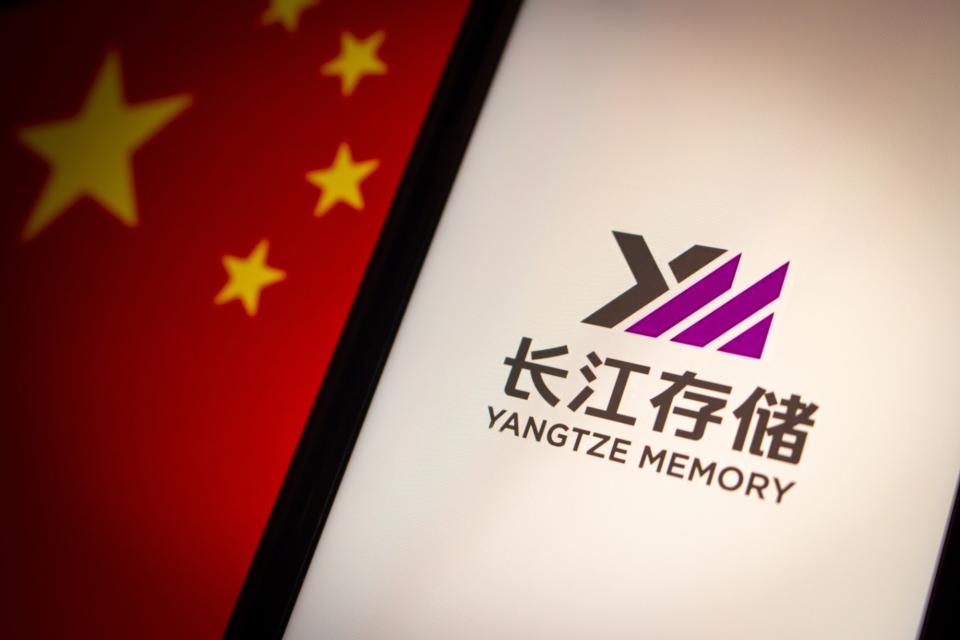Tech war: China's memory chip efforts face stronger headwinds as Micron, Samsung, SK Hynix race ahead on AI
Beijing's ambitions of joining the world's top memory-chip makers, and replacing imports with local products in the domestic market, look increasingly at risk as the world's leading players adopt cutting-edge technologies while China's ability to catch up is hampered by US sanctions, according to analysts and industry insiders.
This, in turn, could seriously hinder China's ability to develop large artificial intelligence (AI) models when the country is already reliant on US suppliers such as Nvidia for sanctions-compliant versions of graphics processing units, or GPUs, they said.
Not long ago, China was seen as catching up quickly with international suppliers in the field of advanced 3D NAND flash and DRAM memory chips, but the gap could have widened again in the era of ChatGPT as Yangtze Memory Technologies Corporation (YMTC) and ChangXin Memory Technologies (CXMT) are unable to press ahead with catch up efforts due to the US export restrictions.
Do you have questions about the biggest topics and trends from around the world? Get the answers with SCMP Knowledge, our new platform of curated content with explainers, FAQs, analyses and infographics brought to you by our award-winning team.
In comparison, US-based Micron Technology, which is banned by Chinese authorities from selling certain products to some local clients, last month announced samples of its high-bandwidth memory 3 (HBM3) Gen2 die to support generative AI applications. Samsung Electronics said last month it has completed development of GDDR7 DRAM for AI applications, and it will double down on high-bandwidth memory in 2024 to meet growing demand in AI applications. Meanwhile, rival SK Hynix, which tops the global HBM market with a 50 per cent market share, is also set to double its HBM production next year for AI servers.
Analysts and industry professionals told the South China Morning Post that Micron, Samsung and SK Hynix remain the default choice for many downstream buyers and that Beijing's restrictions on Micron, which previously had about a 15 per cent market share in China's server DRAM market, mostly benefited its two South Korean competitors.
"The premier choice of replacement for Micron is still Samsung [and] SK Hynix," said an executive at a memory controller producer, who asked not to be named due to the sensitivity of the matter.
China's shortcomings in storage capacity would hinder the country from making the most of its massive data resources in AI development, Ni Guangnan, a Chinese semiconductor expert and an advocate for China's semiconductor self-sufficiency, told the World Semiconductor Conference Expo in Nanjing last month.
Big Tech Chinese firms from Baidu and Post owner Alibaba Group Holding to Tencent Holdings and JD.com are eager to develop generative AI models amid a heated global AI race, creating a black market for Nvidia GPUs such as the A100 and H100. However, Ni said the importance of data storage is often given less attention in China as the primary focus is on computing power.
Top-tier AI server GPUs have set a new industry standard by primarily using high-bandwidth memory, according to a research note by TrendForce. HBM, a type of advanced DRAM optimised for AI innovation, is only manufactured by Micron, Samsung and SK Hynix.

The YMTC logo is seen on an iPhone next to the Chinese flag in this illustration photo. Photo: Shutterstock Images alt=The YMTC logo is seen on an iPhone next to the Chinese flag in this illustration photo. Photo: Shutterstock Images>
China has kept its cards close to its chest regarding its latest technologies, leaving the outside world to guess how far it is progressing in Beijing's self-sufficiency drive. YMTC, for example, has not updated its website news page since October 2022. The company has resorted to local tool suppliers to keep up with its advanced 3D NAND production as strict US export controls have made it harder to go beyond 128 layers, the Post reported previously.
While these locally-made memory chips are suitable for consumer electronics, they may fall short if used for AI servers. Brady Wang, an associate director with research firm Counterpoint, said China has to buy advanced memory chips from South Korean and Japanese suppliers as server memory chips often have a higher requirement than consumer-facing products.
"If [China] insists on using domestic products for security reasons, it would mean compromise on the quality [of servers]," Wang said. He added that it would be hard for YMTC and CXMT to rely purely on the domestic supply chain for their technology development when global peers have access to the best available equipment.
In the China market, YMTC has about a 3 per cent share in NAND flash sales, with US sanctions damaging yields on its advanced NAND chips, while CXMT holds a 21 per cent share of DRAM manufacturing capacity, the highest among Chinese DRAM makers, according to TrendForce.
However, the Hefei-based company maker, whose best offering is DDR4 DRAM, is still trailing several generations behind its international competitors in terms of technology.
This article originally appeared in the South China Morning Post (SCMP), the most authoritative voice reporting on China and Asia for more than a century. For more SCMP stories, please explore the SCMP app or visit the SCMP's Facebook and Twitter pages. Copyright © 2023 South China Morning Post Publishers Ltd. All rights reserved.
Copyright (c) 2023. South China Morning Post Publishers Ltd. All rights reserved.
